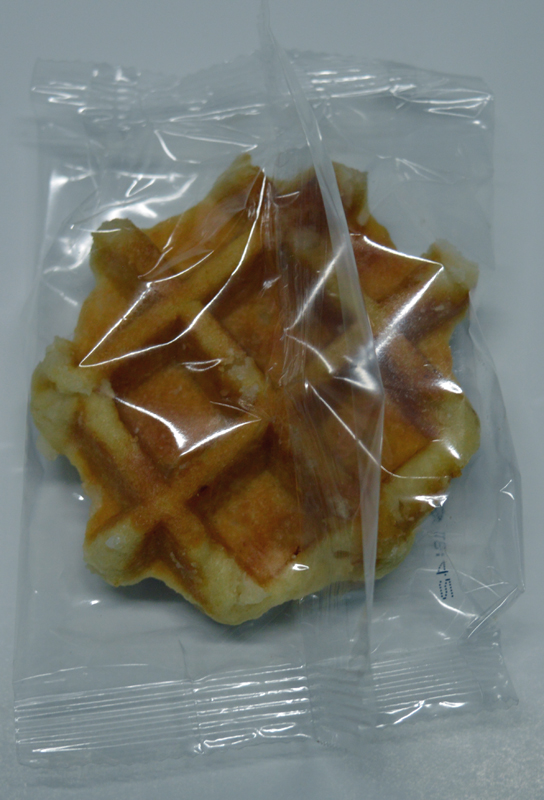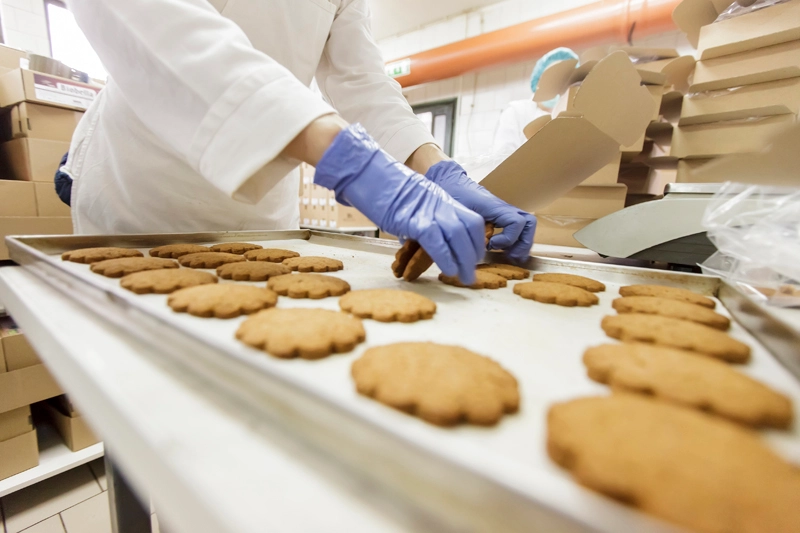
Baked goods from a large commercial bakery or a small boutique bakery often face the same challenges—preserving flavor and freshness until consumers can enjoy the product. Surprisingly, there are several obstacles to overcome, and many can be directly related to the ingredients in the baked goods.
This article will discuss common risks of deterioration, what can cause them, and how packaging can help preserve the freshness of baked goods. First, we will identify what can lead to the deterioration of baked goods and then cover packaging options based on desired storage times.
Common Deterioration Issues in Baked Goods
Moisture Loss: We’ve all experienced biting into a dry piece of baked goods. The moisture in the pastry has vanished, and all that is left is a dry cracker. This moisture loss can occur in many products depending on ingredients and storage. Moisture loss can also happen before packaging. When a product is cooling, moisture is leaving the product. Too much drying during the cooling process can cause the product to lose weight and affect the texture of the finished product.
If experiencing moisture loss in baked goods, there are a few factors to consider and possible corrections.
First, identify the time it takes for the product to lose moisture. If experienced early, an excessive loss could be happening before packaging. There could also be too much air permeability in the package.
Minor packaging adjustments could make a difference if moisture loss occurs several days later. Of course, each baked good is different, but reducing the permeability of the packaging could help retain lost moisture over time.
Moisture Gain/Loss of Crisp
Filled or moist pastries can experience moisture gain over time. In baked items with a crisp outside and filled middle, moisture gain can cause a loss of crispness and a soggy texture. The moisture content of the filling will always factor into the possible increase and help indicate the proper packaging.
Items with fruit or runny fillings present problems when addressing freshness concerns. The higher moisture content means the package needs to allow moisture to escape while limiting the amount of oxygen exposure to the baked outside.
Filled items often require excessive testing to find the proper packaging for maximum shelf life and freshness. Shorter-term storage can be done in porous bags, while more extended storage may need modified atmosphere packaging (MAP) or preservatives.
Microbial
Aside from the loss of freshness and degradation of quality, increased moisture can also lead to mold growth. Historically, chemical preservatives have been used to limit growth. Food producers had to be careful not to use too much preserves to overwhelm taste and quality. Now, more health-conscious consumers prefer fewer chemicals when possible.
One naturally occurring gas has been shown to slow fungus growth. Carbon dioxide within bakery packaging can slow fungus growth and preserve product quality. Only trace amounts are found in our breathable air, but carbon dioxide is not considered a harmful gas. Because of the required barrier properties for gas flush packaging, some products will not benefit from gas flushing, but many do.
Short-Term Storage (1-3 Days)
Some of the most common bakery packaging is for short-term storage. The Containers are made for presentation and cost instead of preservation. Chipboard, clamshell, paper, and tin packaging are popular packaging options for short-term baked storage.
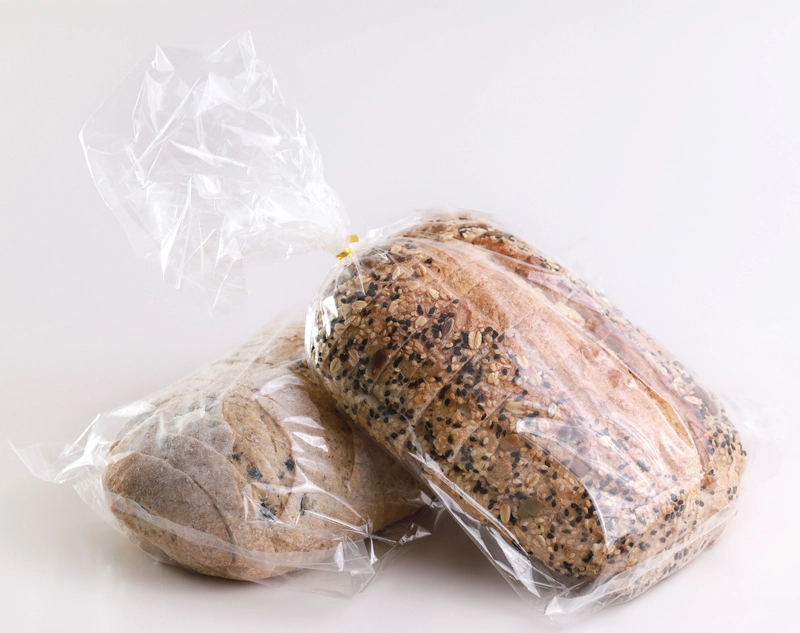
Poly Bags
The iconic packaging people see everywhere are loaves of bread in poly bags. Large commercial bakers have printed poly bags for branding and nutrition facts, but clear bags are an affordable option. Smaller bakeries use clear bread bags and printed labels for branding and product information.
Poly bags are chosen because they are affordable, reduce oxygen exposure, and retain moisture. Poly bags in a two-mil thickness are standard for bread bags. This bag will not eliminate oxygen exposure but reduce it enough to prevent drying out. Many poly bread bags are closed with a twist tie.
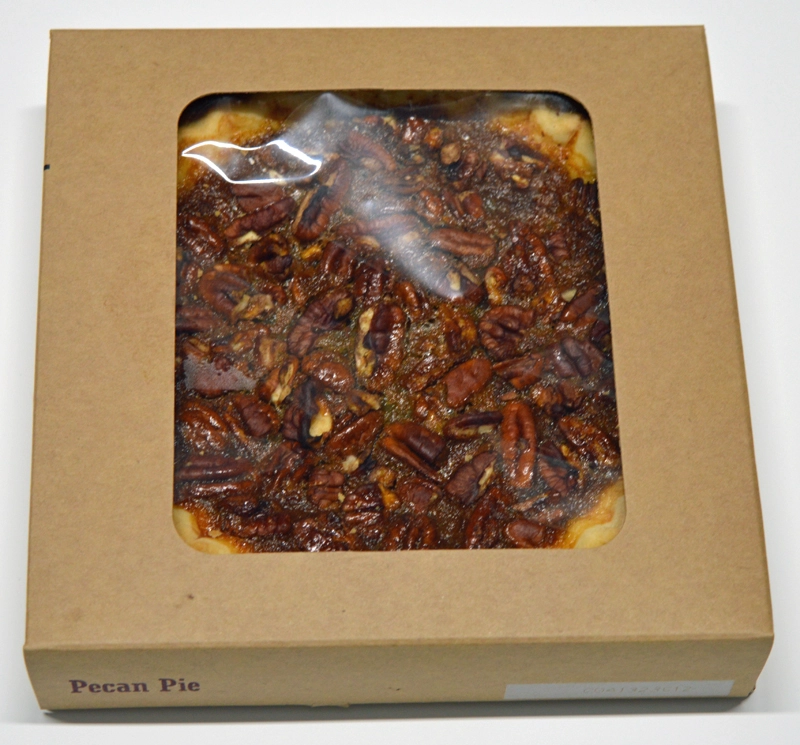
Chipboard Packaging
Chipboard containers are lightweight and affordable, perfect for short-term shelf storage. Find a large selection of sizes and shapes online. White and brown are common, but custom options are available as well. It’s important to note these containers do not extend the life of the baked goods. They may slightly help slow drying out versus an exposed product, but they do not offer the best shelf life extension for baked goods.
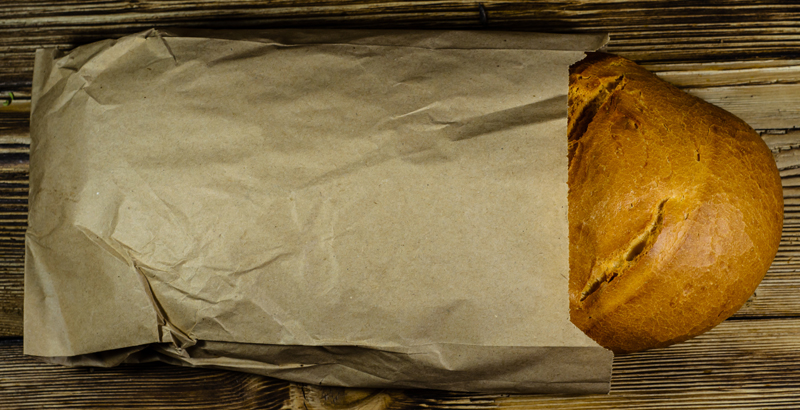
Paper
Even cheaper than chipboard is paper packaging. It comes in many forms, from bags for cookies to small tissues. Paper packaging for baked goods is a very popular option. It can be easily customized and recycled and is affordable for a short-term option. Some paper packaging for baked items with fillings has a coating to keep wet items from seeping through the paper.
Overwrapping
Overwrapping is very popular for meat packaging but is also used for shorter-term baked storage. Cookies and other baked items are used with an overwrap or trays. After the material is pulled over the product, the bottom is mended with a heating pad. The film does not provide a complete oxygen barrier, but it does slow oxygen exposure.
Some baked loaves and rolls are packaged in a tin bottom for easy oven heating, with an overwrap to hold the baked products inside the container. Once the wrap is mended, stickers and labels can be placed over the baked goods. This packaging is low-speed but effective and affordable for lower-volume baked goods packaging.
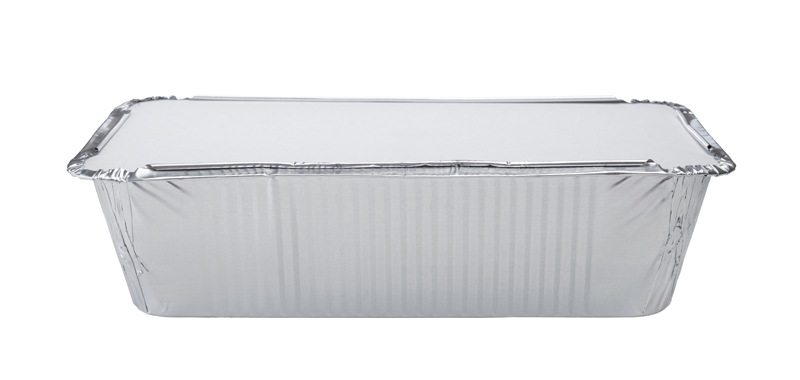
Tin Packaging
Tin packaging for baked goods often features a tin container with a lid. The lid can come in many different forms; plastic lids, foil laminated lids, or an overwrap are used to help reduce the amount of airflow inside the container. The tin itself has excellent barrier properties. The cover can make a difference in the storage and air exposure.
Laminated lids often have a foil side to help reduce air exposure, but these are less popular with baked goods than plastic domed lids. The plastic does help to minimize air exposure but is not ideal for extending the freshness and shelf life. This form of packaging can help increase the length of freshness more than paper and chipboard, but it is not recommended for more extended storage.
Medium Storage (7-14 Days)
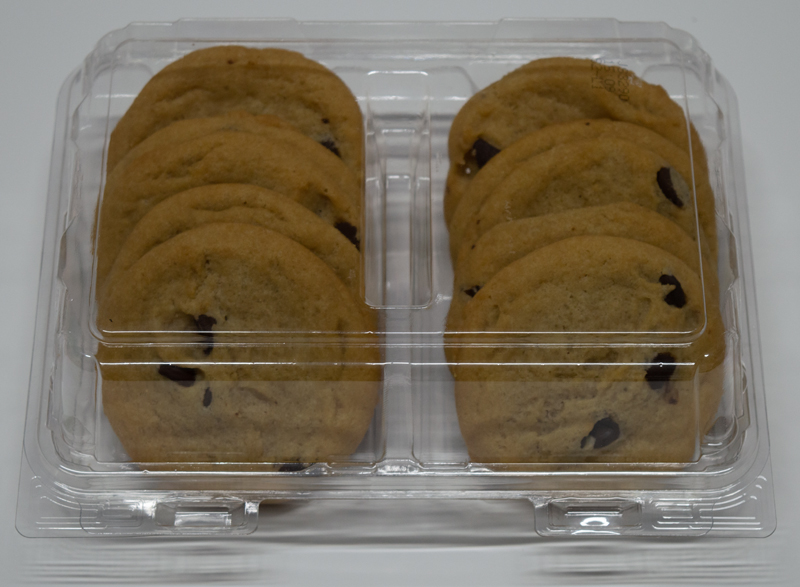
Clamshell
Clear packaging is formed to fit items inside with a snap lip closure. The lid opens and snaps closed as needed. The rigid plastic does provide some oxygen barrier, but without something covering where the lid opens and closes, it should not be used for longer-term storage. For increased shelf life and a tamper-evident seal while on the shelf, shrink wrapping the entire clamshell container once complete can help extend shelf life.
Flow Wrapping
High-speed flow wrapping machines are used to package numerous baked goods every day. With preservatives, flow-wrapped baked goods can last for long periods. Many snack cakes and powdered donuts come in flow-wrapped packages.
Cannabis edibles in some states have minimum thicknesses of film that can be used. Flow wrapping is very popular with dispensaries across the United States. We recommend checking local and state laws for packaging requirements if you consider flow wrapping for your edibles.
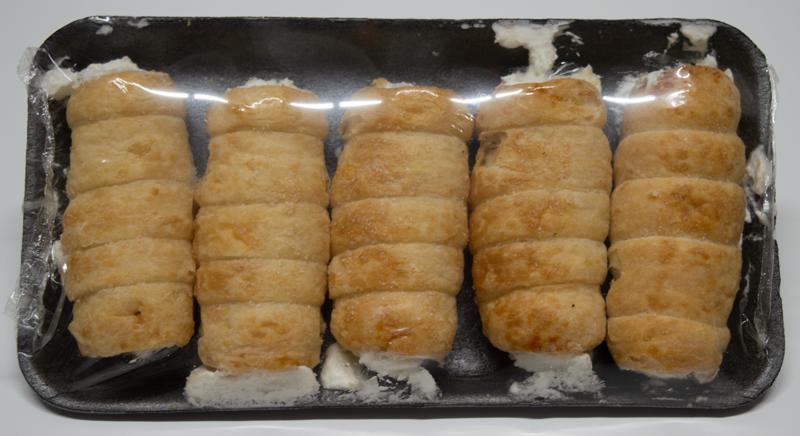
Shrink Wrapping
For preserving flavor and freshness, shrink wrapping is an affordable option for cookies and other baked goods. Fully enclosing products in shrink wrap can reduce oxygen exposure and slow spoiling. Most shrink wrap does not provide a complete oxygen barrier, but it will slow product degradation.
An excellent way to extend the freshness of items in chipboard or clamshell packaging is to enclose them with shrink wrap fully. Aside from reducing oxygen exposure, shrink wrapping can provide tamper evidence for customers to know the product has been undisturbed from the factory until consumption.
Long-Term Storage (Over 14 Days)
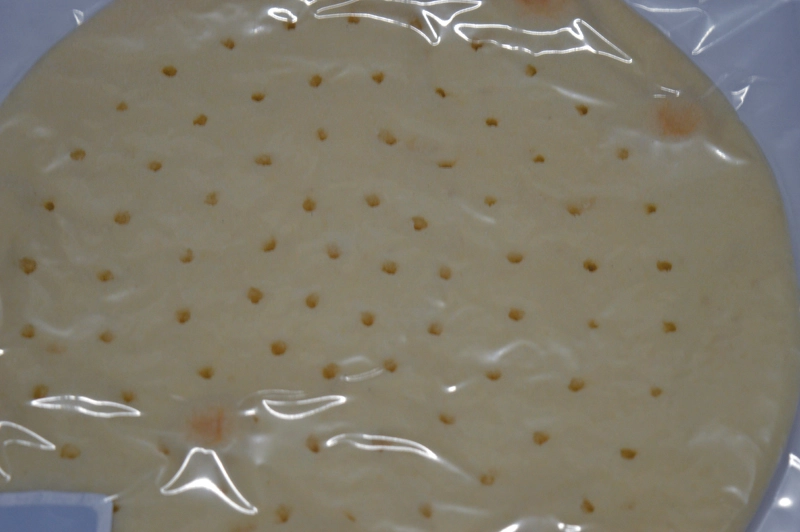
Barrier Packaging
Barrier packaging comes in many different forms. It is used as an oxygen barrier for contents within the packaging. Very popular with meats and other consumable foods. Vacuum packaging is standard, though it is used less for baked items. Flat breads and pizza crusts can be found vacuum packaged.
Barrier packaging for baked goods is often found in coextruded, resealable bags. Once the bags are opened, they can be reclosed to help extend freshness. These bags are in the frozen section for dinner rolls and bread items.
Frozen Packaging
Baked goods in frozen storage often have an uncooked product. The items are pulled out of the packaging and placed in the oven. Frozen pizzas have a cardboard round with a polyolefin shrink wrap. Other frozen rolls or bread may be in aluminum pans with a wrap over them for freezer storage. The tin helps to provide an additional oxygen barrier and a convenient way to heat the product.
Barrier packaging is another popular form of packaging used in frozen storage. The oxygen barrier helps to protect against freezer burn and loss of freshness. Most barrier bags for baked freezer storage come with a reclosable seal.
Conclusion
For cookies and baked items, preserving freshness is paramount to customer satisfaction. The overall goal is to offer a pleasant taste and texture, the same as a product when leaving the production facility. Desired storage times should immediately be addressed when looking for packaging to assist with freshness.
Beyond the desired storage times, each product and ingredients should be examined. Slight changes in the packaging can help extend the life of some products while possibly reducing the shelf life of other baked goods. Lastly, look at the process when baked items are packaged. Are they warm going into the packaging, at room temperature, or uncooked? Each factor can play an essential role in extending the quality and freshness of baked goods. A combination of packaging materials mentioned in this article can provide maximum freshness for specific products. If you have any questions, call 1-800-441-5090 or shop online at uspackagingandwrapping.com.

